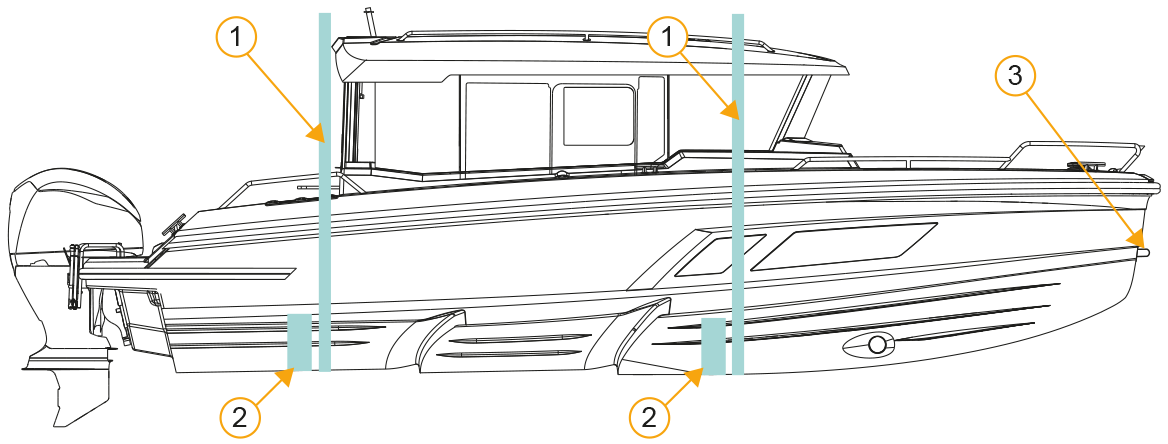Your boat has a compact width, designed for trailering as regular transport.
Local restrictions may apply. Check the regulations specific to your area. For exact dimensions, see section 9.2 Technical specification.

-
Lifting strap locations
-
Cradle location
-
Fastening eye
Commission only a reputable lifting company or a boatyard with sufficient lifting capacity to lift the boat. Pay attention to the following:
-
Always keep the engine up when lifting or trailering.
-
Consider the boat's load capacity and use a sufficiently steady and suitably sized trailer.
-
Make sure the trailer’s side supports carry the majority of the boat’s weight and there is no local weight impact.
-
Place the trailer side supports approximately 10 cm in front of the straps and make sure that the boat does not sway sideways.
Do not stay under the boat when it is hanging from the crane.
Do not use aft cleats when fastening boat to trailer. The end covers of the rub rail can be broken under pressure from fastening stripes. Use the hooking eyes located under the hull.
The stepped hull has sharp edges which can easily get damaged. Handle the boat with care:
-
Make sure the lifting straps do not slip into the grooves of the stepped hull.
-
Use a multi-roller trailer.
-
Do not push the boat into the water. Always bring the trailer far enough into the water so that the boat floats freely before releasing it.
The boat's frame cannot sustain pressure from straps squeezing into the structure.
-
Always use a lifting frame wider than the width of the boat.
-
Never attach the strap ends to one hook.
The fastening eye is not designed to resist strong lateral forces.
Do not use the fastening eye for mooring. Only use it for trailering.